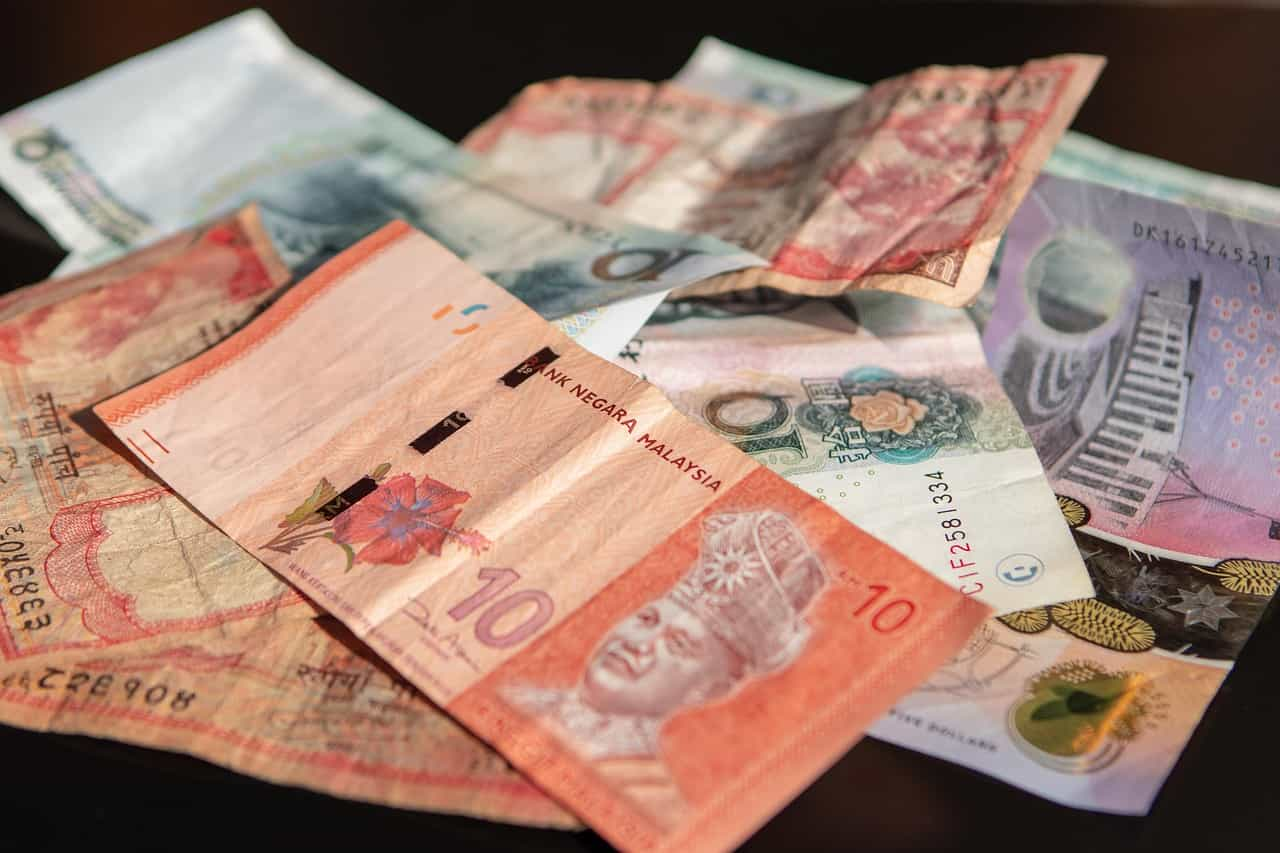Investieren in Malaysia: Vollständiger Leitfaden für Chancen im Jahr 2025
Nachdem ich fast ein Jahrzehnt lang Schwellenmärkte analysiert habe – und dabei ehrlich gesagt auch einige Fehler gemacht habe –, halte ich Malaysia immer wieder für eines der faszinierendsten Investitionsziele Südostasiens. Was mich bei meinem ersten Besuch in Kuala Lumpur 2019 am meisten beeindruckte, war der spürbare wirtschaftliche Wandel in verschiedenen Sektoren.
Malaysia ist ein attraktives Ziel für internationale Investoren, auch wenn ich ganz ehrlich bin: Es ist nicht ohne Komplexität. Die strategische Lage des Landes an der Kreuzung wichtiger Handelsrouten, kombiniert mit seiner vielfältigen Wirtschaft und dem relativ stabilen politischen Umfeld, eröffnet Chancen, die viele westliche Investoren gerade erst zu schätzen beginnen. Doch genau hier liegt der Punkt – und genau hier liegt meine Leidenschaft –, dass zu viele Menschen in malaysische Investitionen investieren, ohne die Feinheiten dieses Marktes zu verstehen.
Malaysia auf einen Blick
Bevölkerung: 33,9 Millionen (Schätzung 2024)
BIP: $432,3 Milliarden USD (2023)
Währung: Malaysischer Ringgit (MYR)
Börse: Bursa Malaysia
Wichtige Exporte: Elektronik, Palmöl, Erdölprodukte, Erdgas
Investment Grade Rating: A- (S&P), A3 (Moody's)
Lassen Sie mich kurz innehalten. Als ich vor drei Jahren – bevor sich die Branche nach der Pandemie dramatisch veränderte – begann, malaysische Investitionen zu recherchieren, machte ich den klassischen Fehler, Malaysia wie jeden anderen Schwellenmarkt zu behandeln. Ein großer Fehler. Malaysias einzigartige Position als Land mit mittlerem Einkommen und in bestimmten Sektoren den Charakter eines Industrielandes hat, erfordert einen differenzierteren Ansatz, als ich zunächst dachte.
Was mich am malaysischen Markt wirklich begeistert – und ich weiß, das klingt vielleicht übertrieben, aber hören Sie mich an – ist die Kombination des Wachstumspotenzials der Schwellenmärkte mit der Infrastruktur und der hohen regulatorischen Komplexität, die ausländische Investitionen tatsächlich beherrschbar macht. Laut einer aktuellen Analyse der malaysischen Investitionsentwicklungsbehörde1Die Genehmigungen für ausländische Direktinvestitionen erreichten im Jahr 2023 329,5 Milliarden RM, was eine deutliche Erholung von den Tiefstständen während der Pandemie darstellt.
Was mich stört: Alle reden über Vietnam, Indonesien und Thailand – verstehen Sie mich nicht falsch, alles solide Märkte –, aber Malaysia bleibt oft unter dem Radar, obwohl es einige überzeugende Vorteile bietet. Die Verpflichtung des Landes, bis 2025 im Rahmen des 12. Malaysia-Plans eine Nation mit hohem Einkommen zu werden2 hat politische Rahmenbedingungen geschaffen, die langfristige Anlagestrategien tatsächlich unterstützen.
Anlage-Haftungsausschluss
Wichtig: Alle in diesem Leitfaden bereitgestellten Anlageinformationen dienen ausschließlich Bildungszwecken und stellen keine persönliche Finanzberatung dar. Die malaysischen Märkte bergen erhebliche Risiken, darunter Währungsschwankungen, politische Veränderungen und Marktvolatilität. Konsultieren Sie vor Anlageentscheidungen immer einen qualifizierten Finanzberater.
Malaysias wirtschaftliche Grundlage und Wachstumstreiber
Lassen Sie mich offen über etwas sprechen, das ich viel zu lange gebraucht habe, um es vollständig zu erfassen: Malaysias Wirtschaft ist weitaus komplexer, als die meisten internationalen Investoren glauben. Als ich begann, mich mit den Daten zu befassen – das war etwa 2021, als alle versuchten, Chancen nach der Pandemie zu erkennen – war ich wirklich überrascht von der Vielfalt und Widerstandsfähigkeit der wirtschaftlichen Basis.
Die malaysische Wirtschaft hat in den letzten zwei Jahrzehnten einen massiven Wandel durchgemacht. Die einst hauptsächlich rohstoffabhängige Wirtschaft hat sich zu einer ausgewogeneren Struktur entwickelt. Basierend auf Daten der Bank Negara Malaysia3Der Dienstleistungssektor erwirtschaftet mittlerweile rund 581 TP3Billionen US-Dollar des BIP, das verarbeitende Gewerbe trägt rund 231 TP3Billionen US-Dollar bei und Rohstoffe stellen rund 81 TP3Billionen US-Dollar dar. Diese Verschiebung – und das kann ich nicht genug betonen – verändert die Investitionsthese grundlegend.
| Sektor | Beitrag zum BIP | Wachstumsrate (2023) | Investitionsattraktivität |
|---|---|---|---|
| Leistungen | 58.3% | 4.8% | Hoch |
| Herstellung | 23.1% | 3.2% | Sehr hoch |
| Konstruktion | 4.2% | 8.1% | Mäßig |
| Rohstoffe | 8.7% | 2.9% | Hoch |
Technologie und digitale Wirtschaft
Hier wird es wirklich interessant – und ich muss sagen, das hat meine Sicht auf malaysische Investitionen völlig verändert. Der Malaysia Digital Economy Blueprint der Regierung4 Ziel ist es, bis 2025 25,51 Milliarden TP3 zum BIP beizutragen. Ich weiß, diese Regierungsziele können, nun ja, optimistisch sein. Aber die Infrastrukturentwicklung und die politische Unterstützung, die ich persönlich miterlebt habe, deuten darauf hin, dass sie es mit dieser Transformation tatsächlich ernst meinen.
Die Halbleiterindustrie hat meine Aufmerksamkeit besonders erregt. Malaysia produziert etwa 131.000.000 Tonnen Halbleiter für die Montage und Prüfung.5, in dem wichtige Produktionsstandorte von Intel, AMD und Infineon Technologies angesiedelt sind. Angesichts der weltweiten Chipknappheit, die die Schwachstellen in der Lieferkette deutlich macht, stellt Malaysias etablierte Produktionsbasis einen erheblichen strategischen Vorteil dar.
Palmöl – ja, ich weiß, es ist umstritten, aber seien wir realistisch, was seine wirtschaftliche Bedeutung angeht – bleibt ein wichtiges Exportgut. Malaysia produziert weltweit etwa 191.000 Tonnen Palmöl.6, und obwohl Nachhaltigkeitsbedenken berechtigt sind, bieten sich Unternehmen, die in nachhaltige Palmöltechnologien und -praktiken investieren, erhebliche Chancen. Die Herausforderung – und hier tue ich mich manchmal mit den ethischen Implikationen schwer – besteht darin, Umweltbelange mit wirtschaftlichen Realitäten in Einklang zu bringen.
Zentrum für Finanzdienstleistungen
Was mich bei meinen Recherchen wirklich beeindruckt hat – und das mag manche überraschen – ist die Positionierung Malaysias als Zentrum des islamischen Finanzwesens. Das Land verfügt über 601.000.000 Billionen an globalen Sukuk (islamische Anleihen).7, wodurch einzigartige Möglichkeiten für Anleger entstehen, die an schariakonformen Investitionen interessiert sind. Ehrlich gesagt habe ich dies zunächst als Nischenmarkt abgetan, aber die Zahlen sind wirklich überzeugend.
- Das Vermögen islamischer Banken übersteigt im Inland 800 Milliarden RM
- Bursa Malaysia beherbergt den weltweit größten Sukuk-Notierungsplatz
- Steigende Nachfrage muslimischer Investoren aus dem Nahen Osten und der ganzen Welt
- International anerkannter regulatorischer Rahmen
Auch der konventionelle Bankensektor weist solide Fundamentaldaten auf. Malaysische Banken verfügen über relativ hohe Kapitalquoten und haben sich in verschiedenen Konjunkturzyklen als widerstandsfähig erwiesen. Allerdings – und da muss ich ehrlich sein – steht der Sektor unter dem Druck der digitalen Revolution und des veränderten Verbraucherverhaltens, insbesondere der jüngeren Bevölkerungsgruppen.

Anlageinstrumente und Marktzugang
Nun gut, schauen wir uns die Praxis an – denn hier neigen viele internationale Investoren, mich selbst eingeschlossen, dazu, die Dinge zu verkomplizieren. Anders betrachtet bietet Malaysia mehrere einfache Wege für ausländische Investitionen, die jedoch jeweils spezifische Vorteile und Einschränkungen mit sich bringen, deren vollständiges Verständnis mir Monate gekostet hat.
Der direkteste Weg für Aktieninvestments führt über die Bursa Malaysia, die wichtigste Börse des Landes. Mit über 900 börsennotierten Unternehmen8 und einer Marktkapitalisierung von über 1,8 Billionen RM bietet es ausländischen Investoren eine angemessene Liquidität. Aber das Problem ist – und das habe ich auf die harte Tour gelernt –, dass nicht alle Schalter über ausreichend Volumen für große institutionelle Transaktionen verfügen.
Börsengehandelte Fonds und Investmentfonds
Für diejenigen, die ein diversifiziertes Portfolio suchen – und ehrlich gesagt, genau das würde ich den meisten Privatanlegern empfehlen – bietet Malaysia verschiedene ETF-Optionen. Der FTSE Bursa Malaysia KLCI ETF bildet den Referenzindex ab und bietet ein breites Marktspektrum. Allerdings muss ich sagen, dass die Kostenquoten nicht so wettbewerbsfähig sind wie in entwickelten Märkten. Wir sprechen von 0,45–0,651 TP3T jährlich für die meisten malaysischen Aktien-ETFs.9.
Investmentfonds, die von lokalen Vermögensverwaltungsgesellschaften verwaltet werden, bieten eine Alternative. Unternehmen wie Public Mutual, AmFunds und CIMB-Principal haben eine etablierte Erfolgsbilanz, allerdings variiert die Performance je nach Fonds und Manager erheblich. Meine Erfahrung – nach der Überprüfung von Performancedaten seit 2015 – zeigt, dass eine konstante Alpha-Generierung in diesem Markt eine Herausforderung darstellt.
Währungsüberlegungen
Der Malaysische Ringgit (MYR) hat gegenüber den wichtigsten Währungen erhebliche Schwankungen erfahren. Von 2021 bis 2024 schwankte der USD/MYR-Kurs zwischen 4,10 und 4,80, was sowohl Chancen als auch Risiken für ausländische Investoren mit sich bringt. Währungsabsicherungsstrategien sollten sorgfältig abgewogen werden.
| Anlagevehikel | Mindestinvestition | Liquidität | Komplexität |
|---|---|---|---|
| Direkte Aktien | Kein Minimum | Hoch | Medium |
| ETFs | 1 Einheit | Hoch | Niedrig |
| Investmentfonds | RM1.000 | Medium | Niedrig |
| REITs | Kein Minimum | Hoch | Medium |
Regulatorisches Umfeld
Lassen Sie mich ganz ehrlich sein, was die regulatorische Landschaft angeht – sie ist sowohl eine Stärke als auch eine Quelle der Komplexität. Die malaysische Wertpapieraufsichtsbehörde (SC) hat umfassende Rahmenbedingungen zum Anlegerschutz geschaffen, doch die Bewältigung der Anforderungen kann für ausländische Anleger, die mit den lokalen Gepflogenheiten nicht vertraut sind, zeitaufwändig sein.
In bestimmten Sektoren, insbesondere im Telekommunikationsbereich, im Medienbereich und in einigen strategischen Branchen, bestehen Beschränkungen für ausländische Beteiligungen. Im Allgemeinen können ausländische Investoren bis zu 491 TP3 Billionen an Telekommunikationsunternehmen und 301 TP3 Billionen an inländischen Fluggesellschaften halten.10Diese Beschränkungen – und ich bin mir nicht sicher, ob sie protektionistisch oder sinnvoll sind – schränken die Möglichkeiten des Pure Play in einigen Wachstumssektoren tatsächlich ein.
Risikobewertung und -minimierung
Hier muss ich nun ernsthaft auf die potenziellen Nachteile eingehen – denn jede Investition birgt Risiken, und die malaysischen Märkte bilden da keine Ausnahme. Politische Risiken sind zwar im Allgemeinen beherrschbar, bleiben aber ein Thema. Die nach den Wahlen 2022 gebildete Koalitionsregierung hat für Stabilität gesorgt, doch die politische Unsicherheit im Hinblick auf wichtige Wirtschaftsinitiativen könnte die Anlegerstimmung beeinträchtigen.
- Währungsrisiko: Die Volatilität des MYR kann die Renditen für ausländische Investoren erheblich beeinträchtigen
- Rohstoffpreisrisiko: Trotz Diversifizierungsbemühungen bleibt die Wirtschaft von globalen Rohstoffzyklen beeinflusst
- Regionaler Wettbewerb: Singapur und Thailand konkurrieren um ähnliche Investitionsströme und den Status eines regionalen Zentrums
- Liquiditätsbeschränkungen: Einige Sektoren und kleinere Unternehmen haben möglicherweise begrenzte Handelsvolumina
Was mir am meisten Sorgen bereitet – und das ist vielleicht etwas übervorsichtig – ist die Möglichkeit, dass eine globale Konjunkturabschwächung Malaysias exportabhängige Wirtschaft beeinträchtigen könnte. Das Handelsvolumen des Landes liegt über 1201 TP3T11, was es anfällig für globale Nachfrageschwankungen macht. Diese Eigenschaft sorgte jedoch auch während der Finanzkrise 2008 für Widerstandsfähigkeit. Daher geht es vielleicht eher um die Bewältigung konjunktureller Auswirkungen als um die Vermeidung struktureller Risiken.
Erste Schritte: Praktische Umsetzung
Sie sind also überzeugt, dass malaysische Investitionen eine Überlegung wert sind – und nun? Basierend auf meiner Erfahrung bei der Unterstützung von Kunden in diesem Markt möchte ich Ihnen einen praktischen Implementierungsansatz vorstellen, der Risiko und Risikomanagement in Einklang bringt. Und ehrlich gesagt: Genau hier überstürzen viele Anleger ihre Bemühungen und begehen kostspielige Fehler.
Erster Schritt: Bestimmen Sie Ihre Allokationsstrategie. Ich empfehle den meisten Anlegern, ihr malaysisches Engagement auf 3-7% eines diversifizierten internationalen Portfolios zu beschränken. Dies ermöglicht eine sinnvolle Beteiligung am Wachstum bei gleichzeitiger Wahrung angemessener Risikokontrollen. Ihre individuellen Umstände können jedoch – und das ist entscheidend – andere Allokationen erfordern.
Empfohlener Startansatz
- Eröffnen Sie ein internationales Brokerage-Konto mit Zugang zum malaysischen Markt
- Beginnen Sie mit einem breiten Markt-ETF-Engagement (FTSE Bursa Malaysia KLCI ETF)
- Fügen Sie nach und nach branchenspezifische Positionen hinzu, die auf Recherche und Überzeugung basieren
- Erwägen Sie Währungsabsicherungsstrategien für größere Zuteilungen
- Beobachten Sie regelmäßig Wirtschaftsindikatoren und politische Entwicklungen
Die Kontoeröffnung bei internationalen Brokern wie Interactive Brokers, Charles Schwab International oder lokalen malaysischen Firmen erfordert Standarddokumente sowie einen Nachweis über Anlageerfahrung. Der Prozess dauert in der Regel 2-4 Wochen.12, obwohl ich Verzögerungen während Spitzenbewerbungszeiten oder wenn zusätzliche Unterlagen erforderlich sind, erlebt habe.
Die steuerlichen Auswirkungen variieren erheblich je nach Ihrem Aufenthaltsstatus und den lokalen Steuerabkommen. Malaysia erhebt Kapitalertragssteuer auf Immobilien, aber im Allgemeinen nicht auf Wertpapiertransaktionen für Nichtansässige.13. Konsultieren Sie jedoch – und das kann ich nicht genug betonen – Steuerexperten, die sowohl mit dem malaysischen Steuerrecht als auch mit den Meldepflichten für Auslandsinvestitionen Ihres Heimatlandes vertraut sind.
Sektorallokationsstrategien
Anstatt zu versuchen, einzelne Gewinner auszuwählen – was, wie ich gelernt habe, in jedem Markt unglaublich schwierig ist –, sollten Sie eine sektorbasierte Allokation in Betracht ziehen, die den strukturellen Vorteilen Malaysias Rechnung trägt. Technologie und Finanzdienstleistungen bieten Wachstumspotenzial, während Versorger und REITs eher defensive Eigenschaften aufweisen.
Angesichts der Position Malaysias in globalen Lieferketten und der alternden Bevölkerung in der Region tendiere ich derzeit zu einer Übergewichtung der Technologie- und Gesundheitssektoren im Vergleich zum Gesamtindex. Ich lerne jedoch noch einige der Gesundheitsunternehmen kennen, und das regulatorische Umfeld für Pharmazeutika kann komplex sein.
Überwachung und Überprüfung
Die Einführung eines regelmäßigen Überprüfungsprozesses trägt dazu bei, ein angemessenes Risikoengagement aufrechtzuerhalten und neue Chancen zu nutzen. Ich empfehle eine vierteljährliche Überprüfung der Positionsgröße, der Sektorallokation und der Performance-Attribution. Die monatliche Beobachtung wichtiger Wirtschaftsindikatoren – BIP-Wachstum, Inflation, Leistungsbilanz und politische Entwicklungen – liefert Frühwarnsignale für mögliche Anpassungen.
Mit Blick auf die Zukunft – und hier bin ich wirklich begeistert von dem Potenzial – schafft Malaysias Engagement für nachhaltige Entwicklung und digitale Transformation mehrjährige Anlagethemen, die über typische Marktzyklen hinausgehen. Die Herausforderung für Anleger besteht darin, Geduld zu bewahren, während sich diese strukturellen Veränderungen vollziehen, insbesondere in Zeiten volatiler Märkte oder schwacher Währungen.
Zum Abschluss möchte ich noch eine persönliche Betrachtung anstellen. Nach drei Jahren der Recherche und Investition in die malaysischen Märkte habe ich sowohl die Chancen als auch die Komplexität zu schätzen gelernt. Dies ist kein Weg, schnell reich zu werden, sondern eine sinnvolle Ergänzung eines diversifizierten internationalen Portfolios für Anleger, die bereit sind, die Nuancen zu verstehen und die damit verbundenen Risiken zu akzeptieren.
Malaysia bietet geduldigen, informierten Anlegern attraktive Wertangebote. Die Kombination aus wirtschaftlicher Diversifizierung, strategischer geografischer Lage und zunehmend anspruchsvollen Finanzmärkten begründet ein Anlageargument, das ernsthafte Überlegungen verdient. Denken Sie daran: Jede Anlageentscheidung sollte mit Ihrer Risikobereitschaft, Ihrem Zeithorizont und Ihren allgemeinen finanziellen Zielen übereinstimmen.
Verweise



